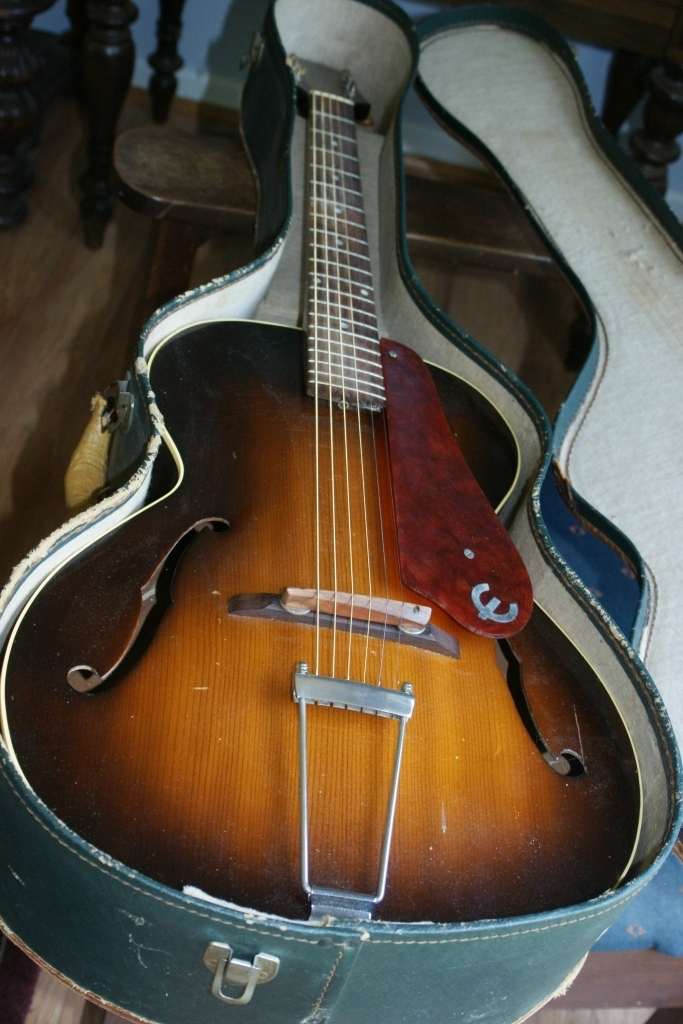
Close-up #36: 1949 Byron SN 59479
These photos I saved several years ago from an auction listing (no affiliation).
What we have here is an Epiphone Byron: This model first appeared in the price list of March 15, 1949, as the company's new entry-level acoustic archtop guitar. The serial number of this example is 59479, suggesting it was made in the model's introduction year 1949 – actually as part of the first documented batch of Byrons.
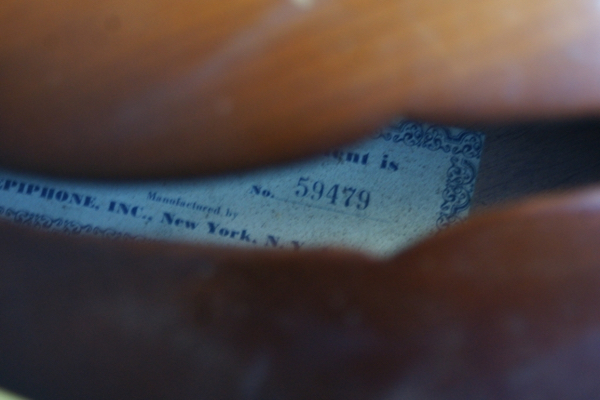
"Byron" ... Epiphone's naming scheme for their Masterbilt models was quite something: Generally trying to associate a certain "grandness", references are a pretty odd mix including the Greek heritage of the Stathopoulo family (Triumph, Zenith, Spartan, Olympic, Zephyr ...), the entertainment world (Hollywood, Broadway, Strand ... ) and British nobility (Tudor, Windsor, Royal, Regent, Emperor ...). The Byron model name was obviously inspired by Lord Byron (1788-1824) who was not only a British nobleman and poet, but also remembered in Greece as a kind of national hero! Which may have been one more reason his name was worthy to become an Epiphone model ...
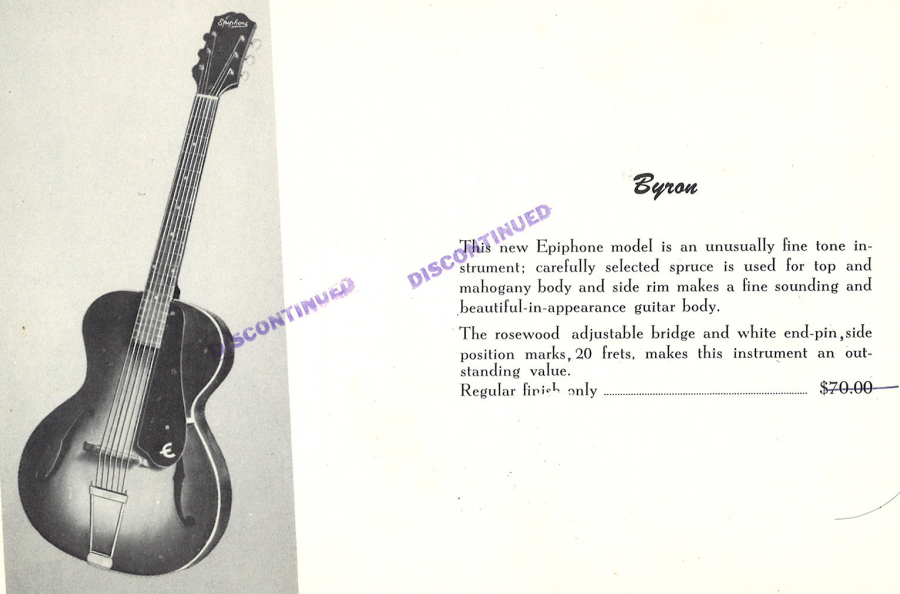
Pictured above the Byron in Epiphone's "Acoustic Guitars and Mandolins" catalog which was likely published late 1949 or early 1950. The model had a list price of $70 and was available in "regular finish only" – i.e. with a sunburst top. The "discontinued" stamp suggests that the model was rather short-lived – i.e. phased out when the catalog was still in use ...
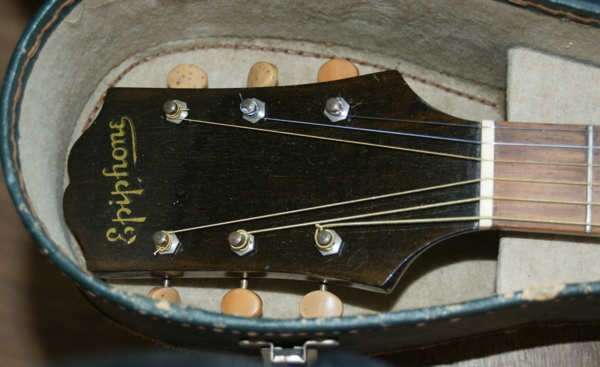
On the otherwise unadorned headstock Epiphone revived their "tail logo" decal which had been used on the low-end Olympic model during the late 1930s. The tuners are plain 3-on-a-strip units with plastic buttons. The neck looks to be made of cherry, a wood Epiphone widely used for necks by 1940.
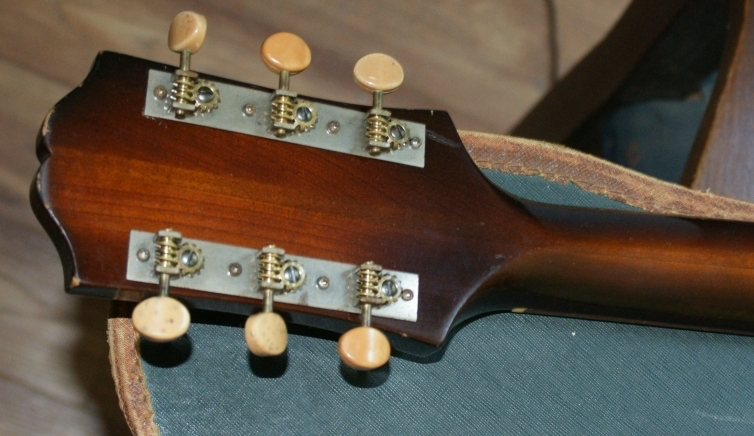
The sides and arched back are made of laminated mahogany – again like the Olympic model which had been discontinued by the end of WW2. Anyway, the 15+" wide Byron can be described as a successor to the Olympic model, sharing many if not most of its features.
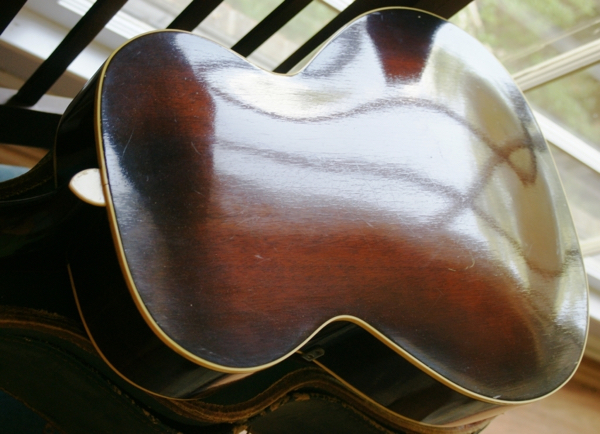
Interestingly, the excellent reference book "Gruhn's Guide to Vintage Guitars" lists the Byron model as available in "approximately 1939" (see also Fisch/Fred, p102). However we have not been able to trace or document any such pre-war example, and so having our doubts regarding this information. If you know about a pre-war Byron – please shoot us a message!
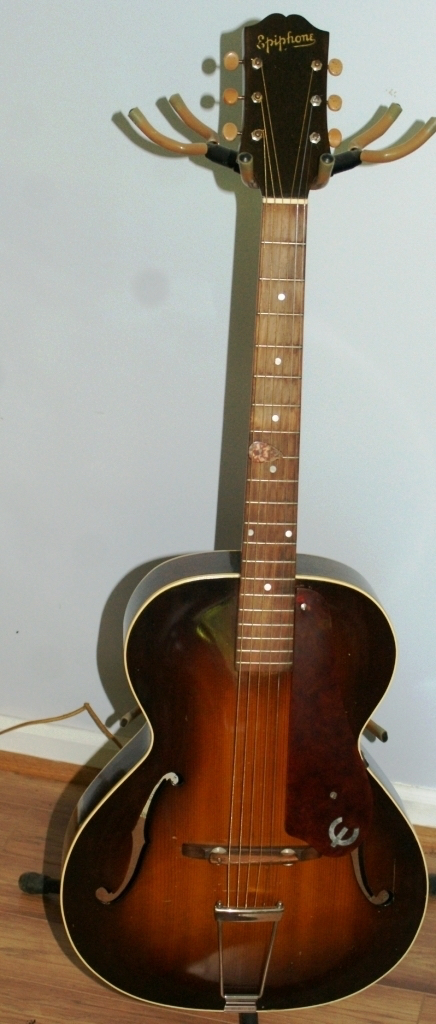
(Feb 25, 2017)